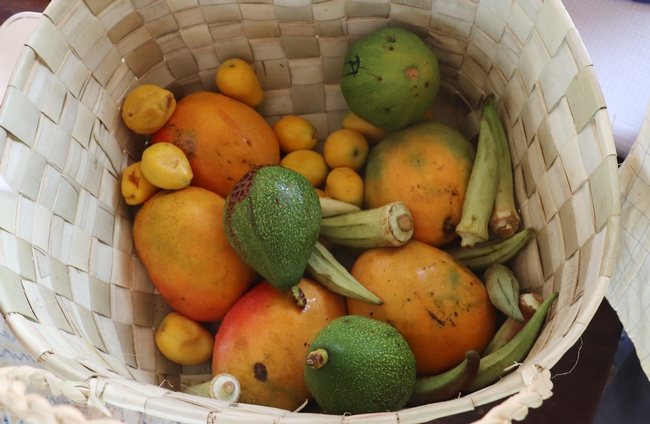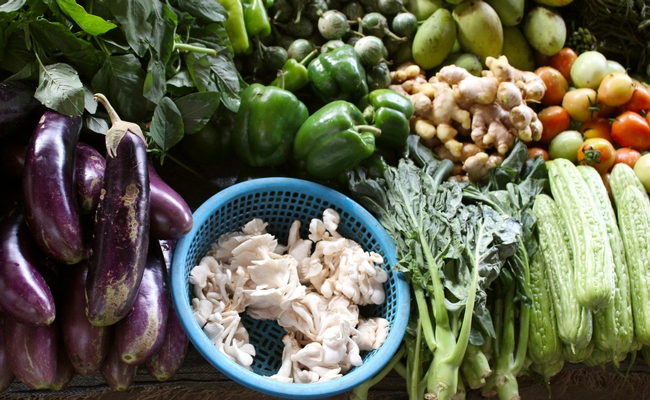
Posts Tagged: horticulture
Who Tie-Dyed This Flower?
Did someone come in the middle of night and tie-dye this flower? No, just Mother Nature showing us some tri-colors: combining a brilliant blue, a soft yellow, and a creamy white in two starburst patterns. We weren't expecting this beauty--a dwarf morning glory, Convolvulus...
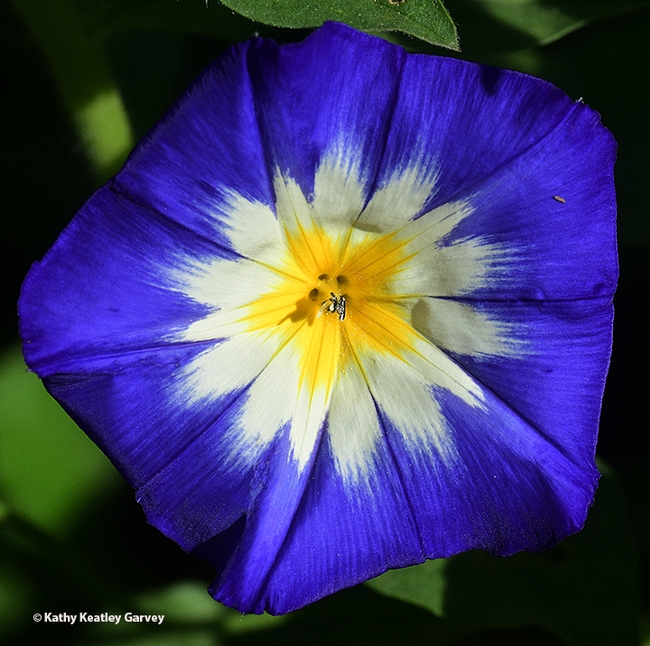
The dwarf morning glory, Convolvulus tricolor, putting on a show. (Photo by Kathy Keatley Garvey)
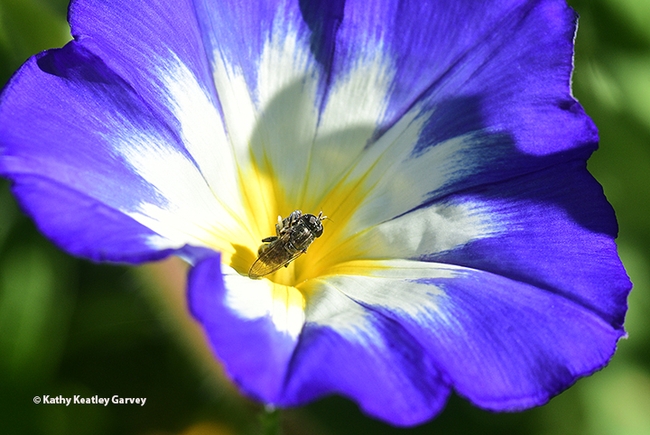
A fly takes a liking to the dwarf morning glory, Convolvulus tricolor. (Photo by Kathy Keatley Garvey)
Research to Create Better Bee Gardens
Regular Haven visitors notice that we frequently change our planting. It's one of the joys of gardening -- there are always new plants to try and experiment with. At the Haven, research on new plants and methods for bee gardens is essential to our educational mission. Previous posts have...
Honey Bees Do Love Their Mallow
There's not much blooming this time of year but if and when blossoms burst open, the honey bees are going to find them. Take the Anisodontea capensis, the cape mallow or African mallow. It's a species in the mallow family, Malvaceae. It blooms year around in our Vacaville pollinator...
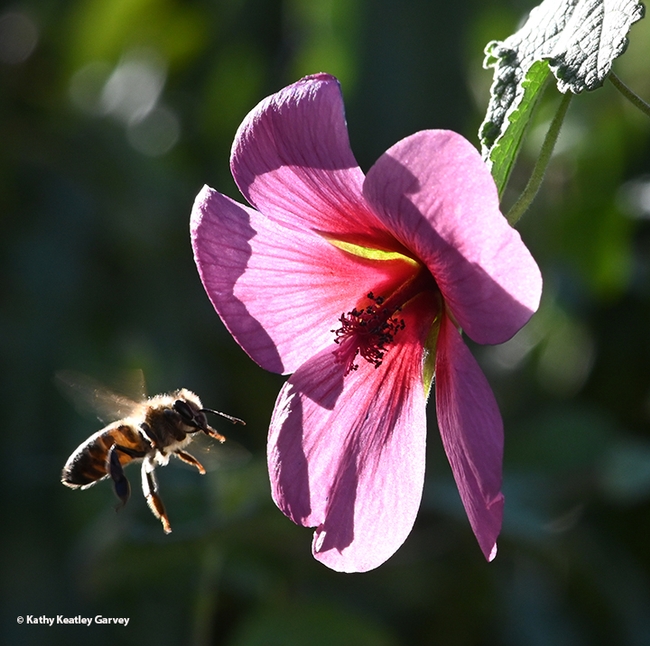
A honey bee heads for an African mallow, Anisodontea capensis. (Photo by Kathy Keatley Garvey)
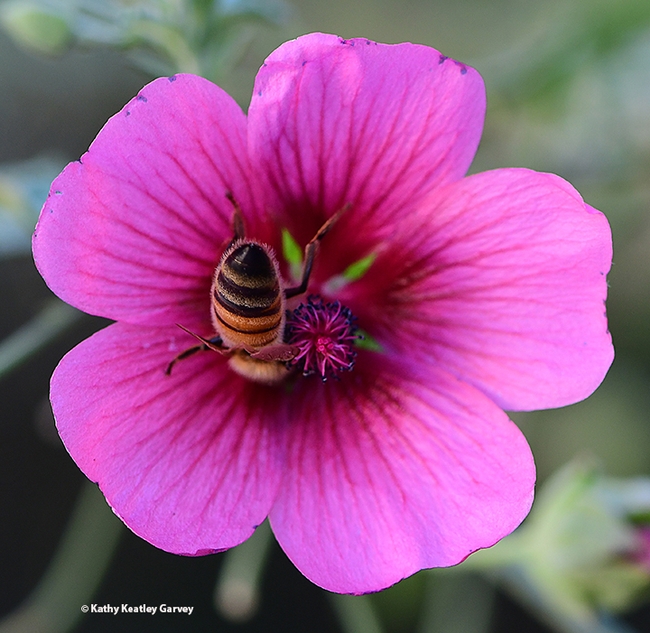
What's a mallow without a honey bee? (Photo by Kathy Keatley Garvey)
The Making of a Bee Garden at UC Davis
The making of a bee garden... It was the fall of 2009 when a half-acre bee garden on Bee Biology Road, UC Davis campus, sprang to life. Headlines on colony collapse disorder dominated the news media, as scientists declared "honey bees are in trouble." Under the direction of interim department...
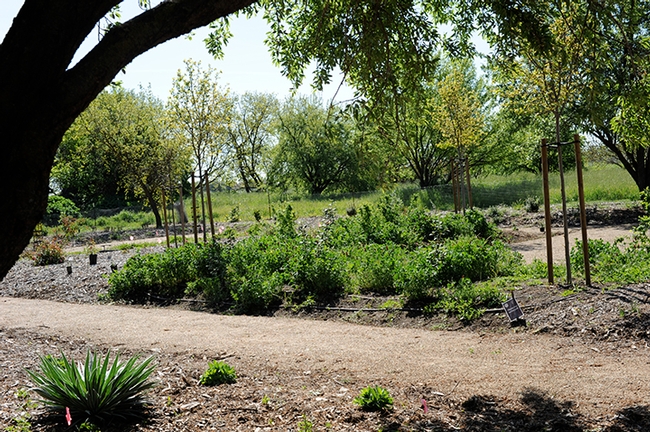
This photo, taken in 2010, shows the makings of the bee garden on Bee Biology Road, UC Davis campus. It was installed in the fall of 2009. (Photo by Kathy Keatley Garvey)
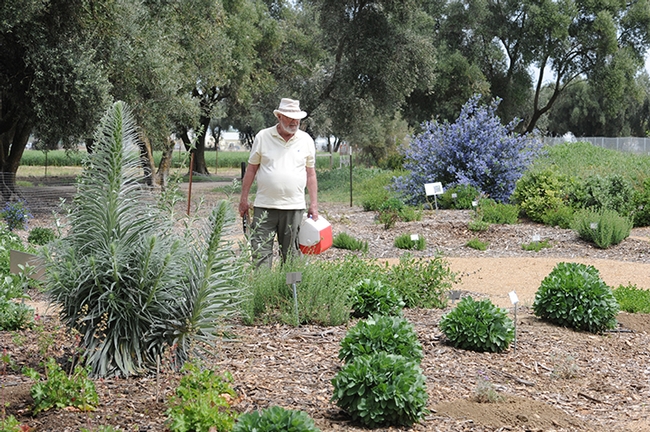
Distinguished emeritus professor of entomology, Robbin Thorp (Aug. 26, 1933-June 7, 2019), detected more than 80 species of bees in the garden. This image was taken in April 2011. (Photo by Kathy Keatley Garvey)
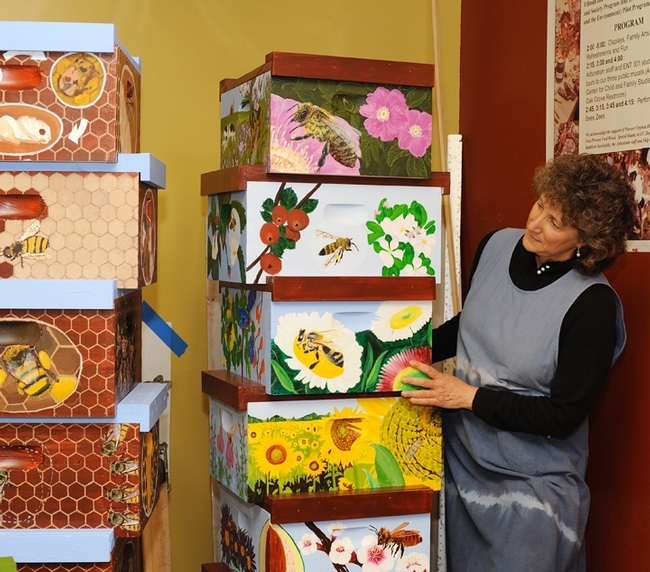
Professor Diane Ullman, former chair of the UC Davis Department of Entomology, with bee boxes that her students made for the bee garden. She and artist Donna Billick co-founded and co-directed the UC Davis Art/Science Fusion Program and provided art for the bee garden. (Photo by Kathy Keatley Garvey)
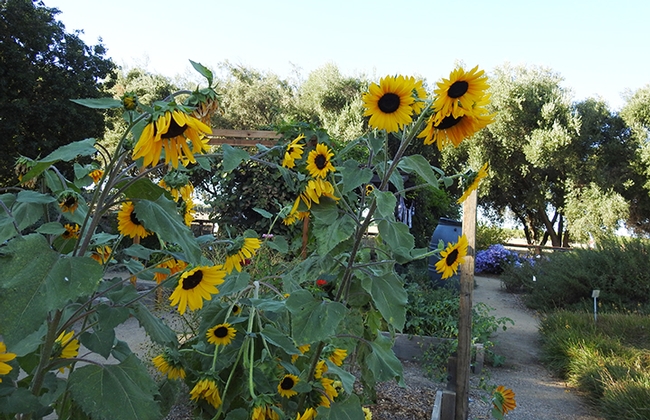
The bee garden today, 10 years later. (Photo by Kathy Keatley Garvey)
Making the case for fruits and vegetables
Why do you love fruits and vegetables? Is it their bright colors? Their many shapes and varieties, the way they can makeover your plate with the seasons? The opportunity to taste local terroir in a very fresh bite of fruit or forkful of salad?
Is it more about the juiciness, crunchiness or succulence?
Or do you think more about nutrition? About vitamins, micronutrients and fiber, after decades of being encouraged to eat “5 A Day” to be healthy? Is it about that feeling of righteous virtue when you fill half your plate with fruits and vegetables — and know you're earning a gold star for eating right?
The importance of eating fruits and vegetables has been making headlines again recently, with studies refocusing on the concept of “nutrition security” in a changing climate and pushing for an emphasis on nutrient consumption. The EAT-Lancet commission — while mostly garnering headlines in the United States related to reduced meat consumption — also recommended a diet that would require almost every global region to increase its consumption of fruits and vegetables to meet healthy diet goals.
But there's another reason to love fruits and vegetables that might not be as obvious. Here's a 30-second video clip of what a young farmer in Uganda had to tell me about vegetables, when I had the chance to meet him last year:
“There's no quicker source of getting money in town,” Boaz Otieno explained, when discussing why he chose to farm instead of going to town to find a job. He also talked about the concept that he could grow vegetables like tomatoes on a smaller plot of land and earn as much for those tomatoes as a larger plot of corn or cassava.
"You might even grow (tomatoes) twice while the cassava is not yet harvested, so there's a lot of money in horticulture," he said.
Otieno is a farmer who was also working as a site coordinator for a research project led by Kate Scow in Uganda, which was supported by the Horticulture Innovation Lab, the USAID-funded research program that I work for at UC Davis. Elizabeth Mitcham, director of the Horticulture Innovation Lab and a UC Cooperative Extension specialist, often talks about the “double-duty impacts” of fruits and vegetables, as these crops can be a tool to achieve two major global goals: improving nutrition and reducing poverty.
And it's not just one farmer's opinion that horticultural crops can yield higher incomes. In a white paper about aligning the food system to meet fruit and vegetable dietary needs, the authors pointed out that data from Africa and Asia have shown farmer profits per hectare 3-14 times higher when growing vegetables versus growing rice. The paper also points out that USDA estimates fruits and vegetables account for 23 percent of production value in American agriculture, grown on less than 3 percent of the country's agricultural land. And here in California, fruits and vegetables are a $20 billion industry.
Later this month, the Horticulture Innovation Lab will be hosting a conference in Washington, D.C., focused on making the case for fruits and vegetables with the theme, “Colorful Harvest: From Feeding to Nourishing a Growing World.” The conference will bring together decision makers, international development practitioners, and researchers from universities across the United States, Africa, Asia and Central America to discuss how horticultural innovations can advance global issues of food security, food waste, gender empowerment, youth employment, malnutrition, and poverty reduction.
While the conference speakers and participants will be diverse, we're also working to bring farmers' voices — like Otieno's — into the conference with video clips from our partners in Nepal, Honduras, Rwanda and elsewhere, to explain what exactly it is that makes them love fruits and vegetables.
More information:
- Conference info: Colorful Harvest: From Feeding to Nourishing a Growing World
(Check the conference webpage for more videos and presentation info after the event.) - White paper: Aligning the Food System to Meet Dietary Needs: Fruits and Vegetables
- More about the Horticulture Innovation Lab
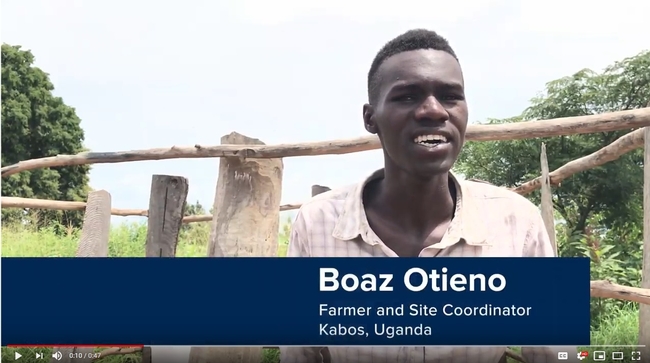
Watch a short video clip on what Boaz Otieno likes best about vegetables: https://youtu.be/aEu9BgL9aH4

